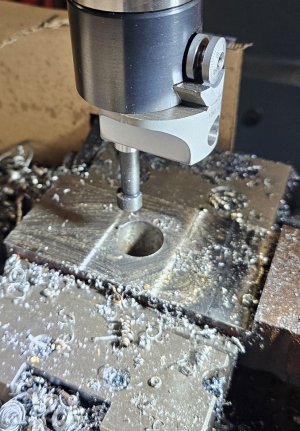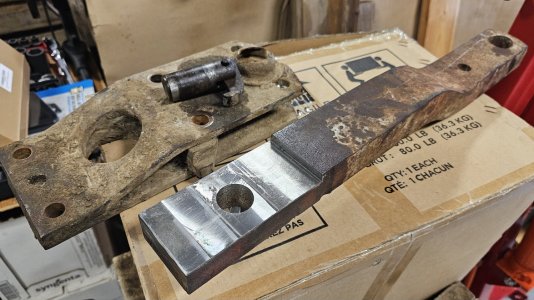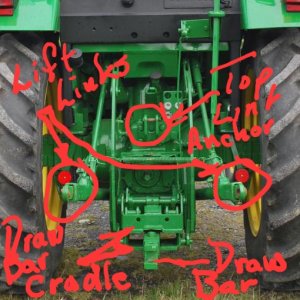Hi SusI have a job to do for a rancher in the area. They broke the drawbar on their tractor, and can't find a replacement at all. They could get a new tractor but that would be an expensive fix. So they bought a drawbar at a junk yard that they figured they could modify. It needs to be cut to length, milled down to fit the receptacle, and a hole for the locking pin drilled out. A few days of messing with that and it suddenly became my project.
I looked at it and said, that will be hard on endmills, and I've no idea how hard it will be to drill. So I will need to buy endmills and drills at your expense plus my time - which could be several more days. We settled on 2 grand or my cost plus markup whichever was less. That's a kings ransom for such a simple job but still cheaper than a new tractor.
First up was the cutoff. Broke a 20 tpi Starrett Intense blade doing that. Replacement on their tab already on order. I switched to a cutoff saw with a grinding wheel for steel in it. Wore out a 14" blade doing that. But succeeded after about 4 hours of patience. Could not just cut - had to cut and chill to soften the steel enough to cut. Would have used a cutting torch but too afraid to ruin the metal properties. Grinding with coolant seemed much safer. That part of the job is done but took a whole afternoon.
Next up is cutting the bar size down. Took a few passes with a Carbide endmill. Not happy.
My Question: I am using 1/2 inch 4 Flute Carbide Endmills to plane it down about 3/8 inch. I'm shooting for 1/8 per pass. I tried HSS which wouldn't touch it. My endmills are not happy cutting this high strength forging. They were happiest at 1100 rpm and a feed rate that just loads the cutter by feel. Faster chatters, slower stops cutting (I assume it's hardening the metal). It's also unproductive. Even as is, this will take all weekend and I won't have the balls to charge what the job is really worth.
What speed would you run a half inch carbide endmill at in a high strength steel forging like this?
Note - It's probably also case hardened. So future passes might be easier. Won't know till I get there.
I am not equipped to soften the metal and then reharden it. Nor do I want to try.
Can u post a picture of what it is that you are working on




